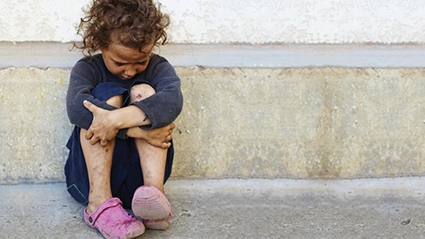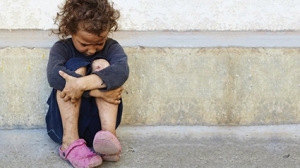UNICEF Reveals Results of New Welfare Monitoring Survey
UNICEF Georgia presented a new Welfare Monitoring Survey this week at Holiday Inn Tbilisi.
The Welfare Monitoring Survey is a biennial household survey covering all the government controlled regions of Georgia. The results of the 2015 round examined the prevalence and distribution of consumption poverty, material deprivation, subjective poverty and social exclusion.
The Survey revealed that every 5th child lives under the poverty line and every 6th child lives under the subsistence minimum. Despite the increase in family consumption, people’s income has not changed and poor children still have fewer chances to attend educational institutions than those from wealthier families.
The major findings of the Welfare Monitoring Survey highlighted that poverty rates are higher in households that have children than those without. Child poverty rates are about 50 percent higher in rural areas than in urban areas. Extreme poverty (1.25 USD per day, less than 3 GEL) reduced from 3.9 (2013) to 2.1 percent (2015) among the general population, and from 6 to 2.5 percent in children. General poverty indicators (2.5 USD per day, around 5 GEL) reduced from 24.6 percent (2013) to 18.4 percent with a reduction in the rate for children from 28.4 to 21.7 percent.
The Survey also indicates that people’s perception of subjective poverty has worsened, with increased prices, serious illness and a decrease in household income reported as the major problems. The average healthcare expenditure of a household has increased by 31 percent and purchase of medicines remains the main component of healthcare spending. Preschool attendance rates (for 3-5 year-olds) increased from 57.9 percent in 2013 to 62.3 percent in 2015.
“Much progress has been made, but still, too many children are left behind, requiring urgent action from the government to protect the rights of all children,” said Laila Omar Gad, UNICEF Representative in Georgia. “In Georgia, children are more affected by poverty then any other population group. Although the Survey reveals that there has been a significant reduction in the child poverty rate, there are still far too many children in Georgia living in poverty.”
An enabling environment for sustainable growth is needed, Gad says, speaking of the need for Georgia to invest in its children.
“Without a targeted social assistance scheme, almost 9 percent of children might be found to be living in extreme poverty, rather than the 2.5 percent reported in the Survey,” Gad highlighted.
“Protecting children’s rights is the key to building a stronger, more sustainable society and while Georgia has made important progress in legislation and in programs for children’s rights, the evidence of the Survey shows clearly that there is much more to be done to reach every child in Georgia,” she concluded.
The recommendations of the survey include protecting children living in poverty from multiple deprivations - since they are disproportionately at risk of lower performance in education, dropping out of school and having poorer health - by developing a multi-sectoral strategy for children’s rights that is aligned with the Convention on the Rights of the Child.
In order to protect chronically poor children, the survey recommends having additional well-designed benefits. Vulnerable families should be reached in a timely manner to help them cope with life-changing events such as unemployment or illness, and to prevent them from sliding into poverty.
According to the survey, youth groups starting new families and making the transition to a labor market are especially vulnerable.
Vulnerable groups should be better targeted, the Welfare Survey says, according to which an improved regular data collection is needed.
One of the recommendations also addresses the need for improved access to medicine for mothers and their children through developing subsidized basic packages produced by suppliers who comply with international standards in manufacturing pharmaceutical products. This is seen as a necessary measure to reduce child and mother mortality from common illnesses.
The national account systems also need strengthening, the Survey reveals, with the implementation of an early and preschool education law for every child, and establishing mechanisms to reduce the potential dropout rates from the education system.
While commenting on the findings of the Survey, Zaza Sopromadze, Deputy Minister of Health, Labor and Social Affairs of Georgia, mentioned that targeted social assistance schemes have a positive impact primarily on socially deprived children. He also noted that the subjective poverty indicators shown in the report have their understandable reasons, as they showcase the need and demand of the population for a better social environment. “Social services are now available for every citizen in the country,” he said.
“Georgia has done wonderful work in moving the agenda forward,” said Mercy Tembon, World Bank Regional Director for the South Caucasus. “The level of economic growth of every country is largely dependant on the quality of its population. A lot had been done over the years to improve the quality of living of the Georgian population. This is demonstrated by all the reforms that have happened, targeted social assistance and penitential reforms. With surveys like this it’s always important to know where we are and how we are progressing. The goal is to reduce extreme poverty to 3 percent by 2030. We have to invest in every child’s education. The children of this country have to be brought out of poverty, be given a good education; and offered the chance to have better health.”
Read our EXCLUSIVE interview with Laila Omar Gad, UNICEF Representative in Georgia in this issue of GEORGIA TODAY!
Nino Gugunishvili












